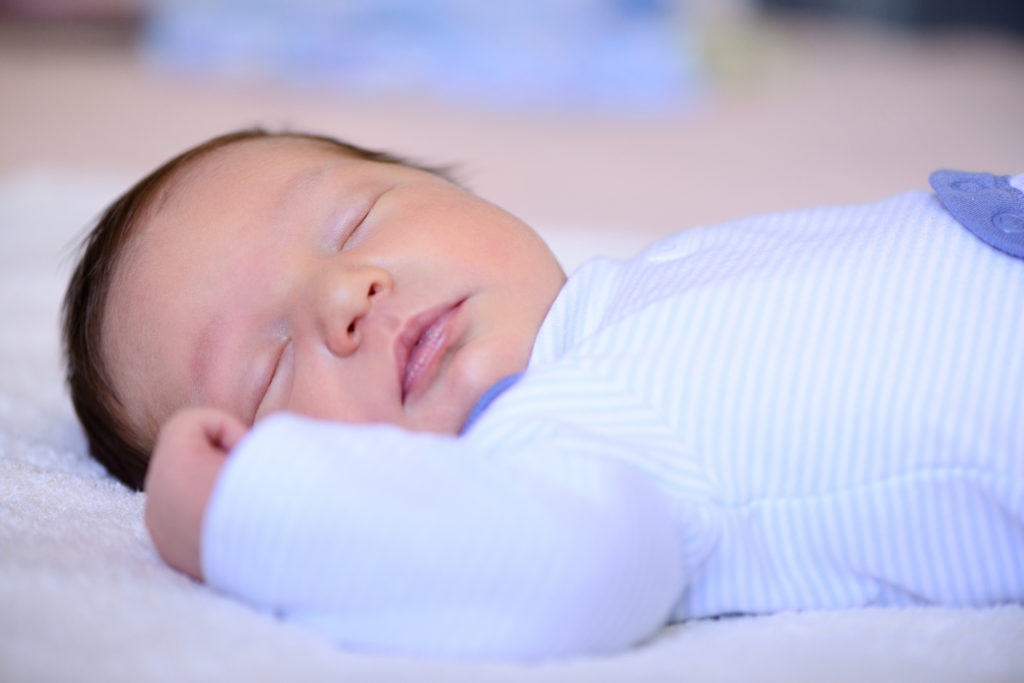
HOME SAFETY
Infant Sleep & Sleep Cycles
 Extra blankets can seem so cozy in a baby’s crib but soft bedding can block a baby’s airway during sleep. A firm mattress covered with a tight-fitting crib sheet is all you need for your baby to sleep well. If you’re worried about keeping your baby warm on those cold winter nights, try using a sleep sack (wearable blanket).
Extra blankets can seem so cozy in a baby’s crib but soft bedding can block a baby’s airway during sleep. A firm mattress covered with a tight-fitting crib sheet is all you need for your baby to sleep well. If you’re worried about keeping your baby warm on those cold winter nights, try using a sleep sack (wearable blanket).
Safety Tips
- Because most infant suffocation occurs in the sleeping environment, babies should always sleep in a safe crib, bassinet or pack-n-play.
- Lay your baby on his or her back for every sleep.
- We know that stuffed animals, bumpers and all those cute accessories make a baby’s crib seem warm and cozy. Unfortunately, they can often do more harm than good. Soft bedding can block a baby’s airway during sleep. A firm mattress covered with a tight-fitting crib sheet is all you need for your baby to sleep like a baby.
- Room-sharing is a safer option than having your baby sleep in bed with you. Place your baby’s crib, play yard or bassinet in your room for more convenient feeding and close contact.
- Remember to always return your baby to his or her own crib when you’re ready to go back to sleep. This is tough sometimes because parents are often more tired than the baby, but it is much safer.
Sleep Cycles for Infants and Children
Development of a regular sleep-wake cycle starts at about six weeks of age. Sleeping is the primary activity of the brain during early development. Children that develop healthy sleep cycles at a young age are less likely to struggle with sleeping problems as they get older. Healthy sleep cycles can help prevent daytime sleepiness and behavior problems that may appear in young children. It is essential to start healthy sleep-wake cycles in the early years of development to promote adequate cognitive growth.
Newborns (1-2 months)
- Newborns sleep a total of 10 to 18 hours a day on an irregular schedule with periods of one to three hours spent awake.
- Sleep-wake cycles are regulated by light and dark and these rhythms take time to develop, resulting in the irregular sleep schedules of newborns.
- Observe baby’s sleep patterns and identify signs of sleepiness.
- Place baby in the crib on back when drowsy, not asleep.
Infants (3-11 months)
- Infants typically sleep 9-12 hours during the night and nap 30 minutes to 2 hours, one to four times a day; fewer as they reach age one.
- Develop regular daytime nap and bedtime schedules.
- Have consistency with a bedtime routine.
- Encourage infants to fall asleep independently and in their crib.
Toddler/Pre-School Age (1-5 years of age)
- Toddlers/pre-school age children typically need 11-14 hours of sleep. Naps vary among children.
- Maintain a daily sleep routine and consistency with bedtime schedule.
- Set expectations for bedtime and enforce the rules of sleeping in their bed.
- A security blanket or stuffed animal may help children at this age with bedtime.
School-Aged (5-12 years of age)
- Children this age need 10-11 hours of sleep.
- Continue to have a bedtime routine and emphasize the importance of regular sleep.
- Avoid having electronics and televisions in children’s bedrooms.
- Stay away from caffeine products.
- Educate children on the importance of healthy sleep habits.





